Lower School and Preschool Students Participate in the Penny Harvest
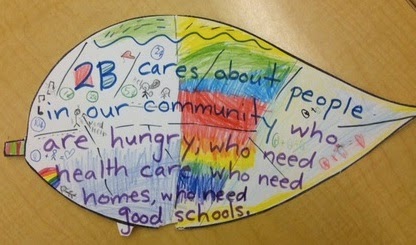
Anna Kotelchuck, 2nd Grade Teacher
Penny Harvest is a longstanding project in our second grade classrooms,
and it is an integral component of our math curriculum and our
social-emotional curriculum. “Penny Harvest” is run by an organization
in NYC called Common Cents. Common Cents was started in 1991 by a father
and daughter who wanted to help people who were homeless. They realized
that they could collect “idle pennies” – the kind of loose change that
lives in the bottom of our bags or between our couch cushions. Every
little penny could add up to make a difference. Their work grew
incredibly, and now hundreds of schools across New York City
participate, and donate their collected coins to a range of social
service organization. At Brooklyn Friends, in addition to being a
valuable component of our conversations about equity, justice, and
service, our penny harvest work also makes up our math curriculum for a
six week coin and addition unit. Here is how it works…
 Second Grade tells the Lower School
Second Grade tells the Lower Schooland Preschool about our project by visiting their classrooms,
explaining that we need their help collecting change, and having Lower
School classrooms think about issues in the community that they care
about. This year, access to health care, poverty, and education came up
as important, as well as many other issues. All the children begin to
collect loose change to bring in.
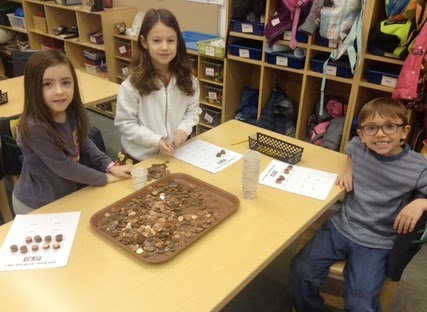 We begin our math unit on coins,
We begin our math unit on coins,identifying and counting them. We do addition with coins, play games
with coins, and then as soon as we can, we collect coins as they are
brought in to sort and count. Second graders have to accurately count
what ends up being a very large quantity of coins. By the end, not only
are they experts at identifying coins, adding up coins of various
denominations, and knowing how many of each coin make up a dollar (early
multiplication!), but each day’s total is added on, helping children
develop their two, three, and four digit addition strategies.
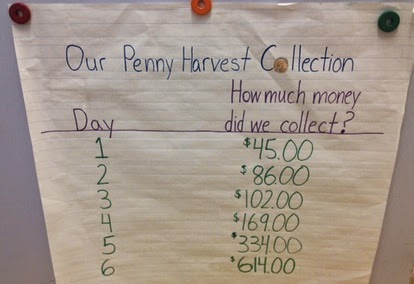 For the past few years we’ve
For the past few years we’vecollected and counted over $2,000.00 in pennies, nickels, dimes, and
quarters each year. This is with the help of all the children in the
Lower School and Preschool! After we turn in our heavy bags of coins to
Common Cents, they send us a check for the amount we have to donate.
Then the serious decision making begins. Based on many discussions and
negotiations, children have to decide which organizations should get the
money. Most recently, children have been drawn towards organizations
that support civil rights, women’s rights, workers rights, and LGBTQ
rights. This interest is directly connected to our social studies unit
on Change-Makers, people who have fought for social justice in these
categories. Some recent organizations we’ve donated to over the years
are: The Bedford-Stuyvesant Family Health Center, Picture the Homeless,
the Third Wave Foundation, Geneseo Migrant Center, the Food Bank for New York City, and more.
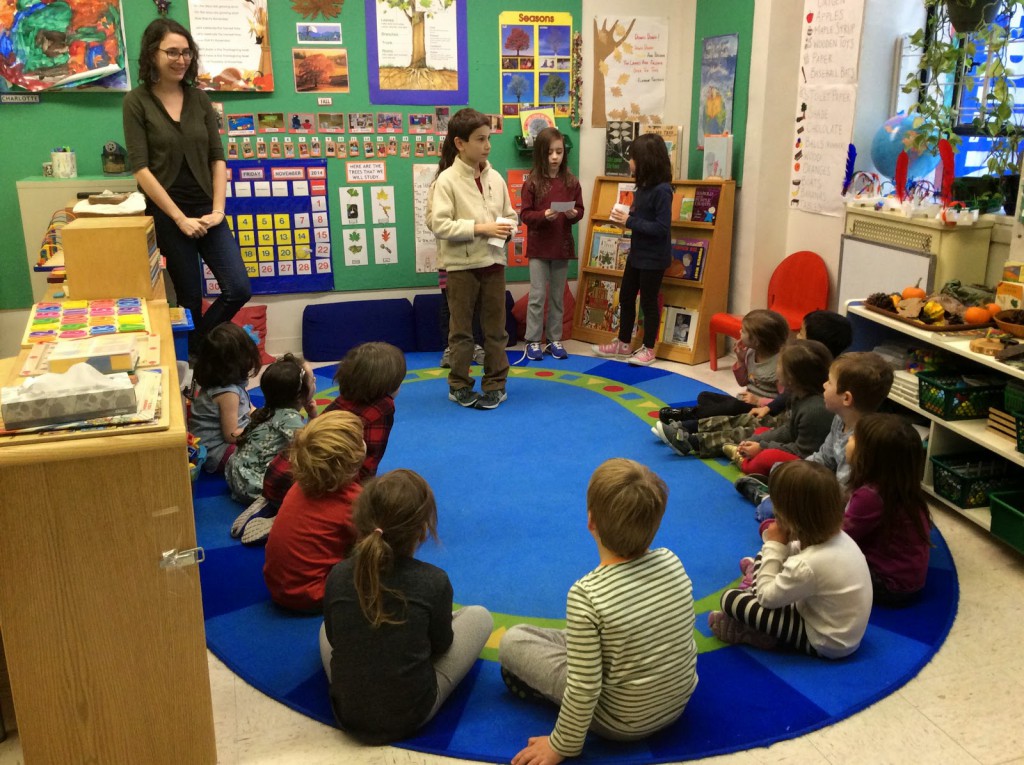 To follow in the spirit of helping and supporting members of our community, and since Fall 2012, the Preschool has partnered with their Lower School buddies to support them in their math curriculum and service learning project – The Penny Harvest.
To follow in the spirit of helping and supporting members of our community, and since Fall 2012, the Preschool has partnered with their Lower School buddies to support them in their math curriculum and service learning project – The Penny Harvest.
This project always directly follows the Room to Grow project, in order to carry on the spirit and joy of giving and sharing with each other. With the Penny Harvest, 2nd graders come down to the Preschool to tell them about the Penny Harvest and why they are raising the money, and who they will give the money to once the collection is complete.
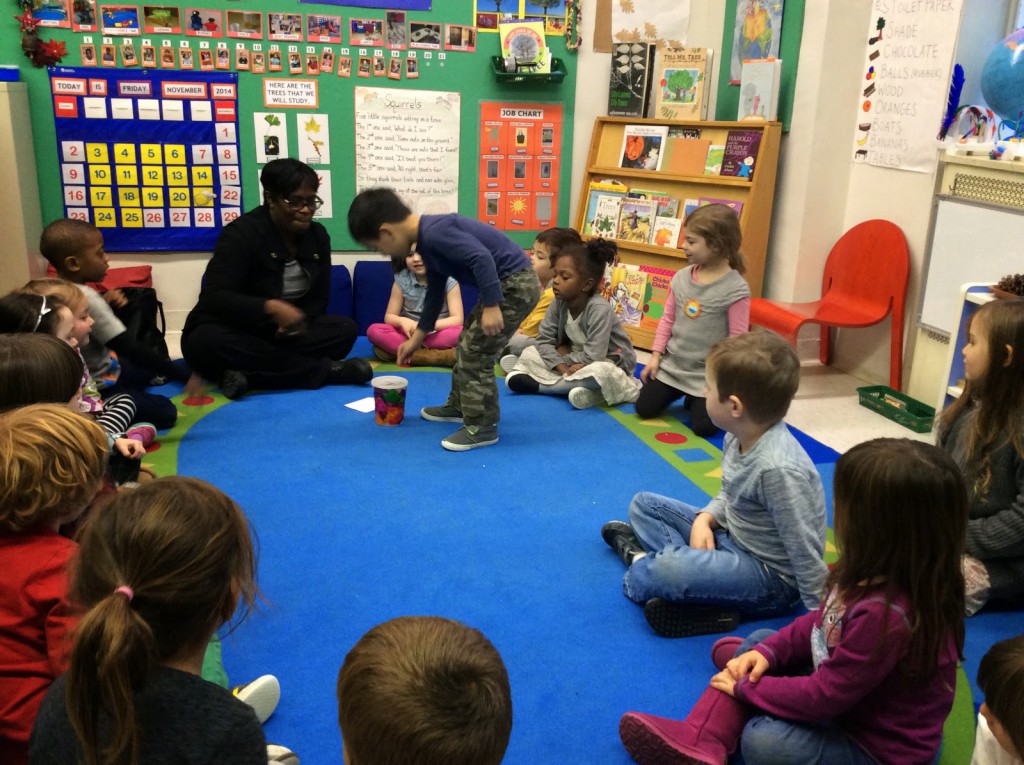 Because this follows directly
Because this follows directly
on the
heels of Room to Grow, the children already understand the premise of
the project, and they are excited about sharing whatever loose change
they might have. The 2nd graders provide each preschooler with a small
brown paper bag to take home to collect loose change. They also
leave behind a large bag to hold all the coins, which is collected at
the end of the project. As the children bring in their brown paper bags
with coins, they are excited to add to the growing collection and to
observe how heavy the large bag is getting. A few children are
motivated to bring an additional bag of loose change after their
initial donation! The children thoroughly enjoy participating in
this project, especially since it is often in partnership with their
Lower School buddy class. It really feels like a fun and fulfilling
thing to do!
